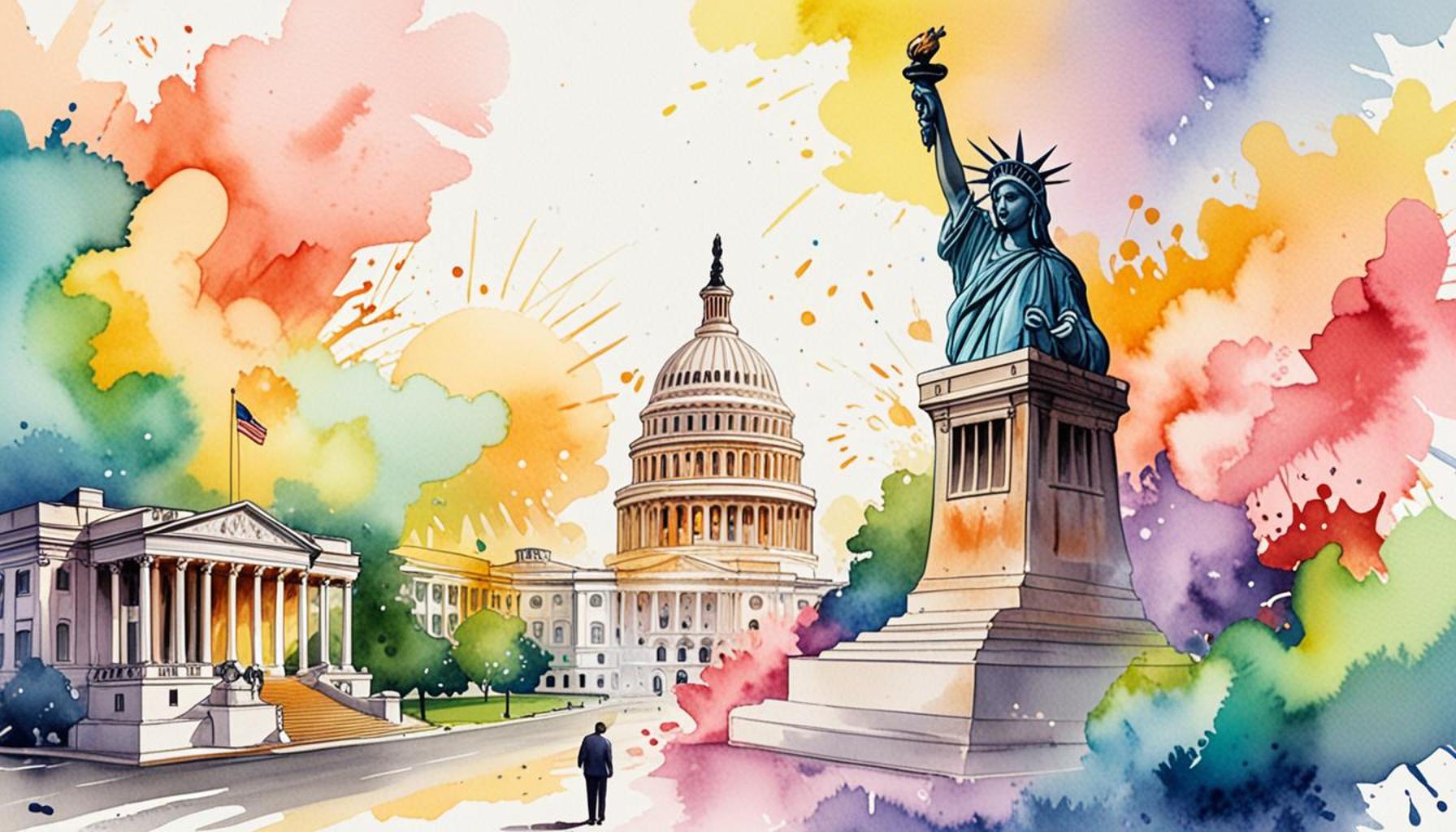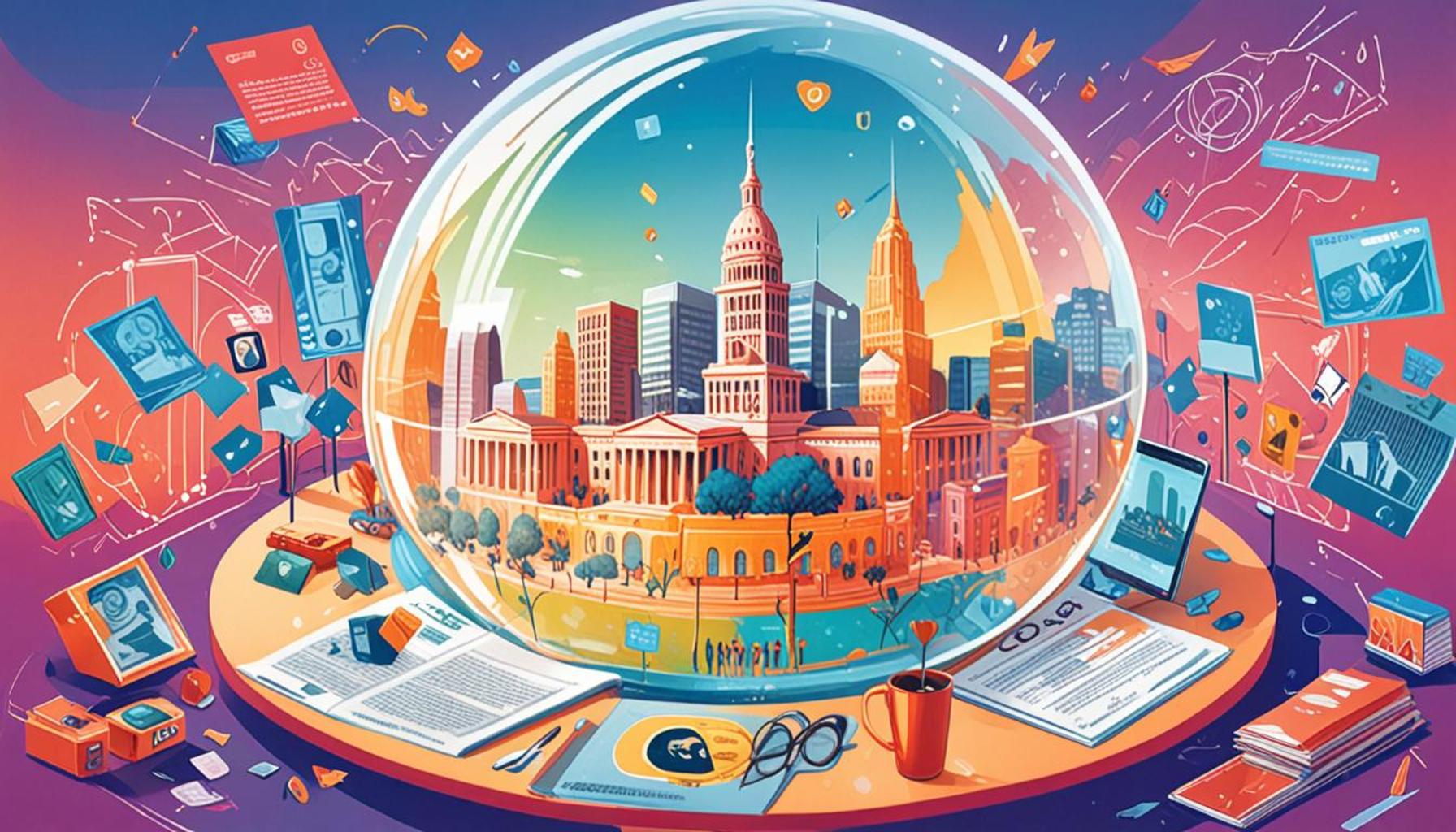Creating Impactful Narratives: The Importance of Storytelling in Content Strategy for Government Benefits

Understanding the Importance of Storytelling in Government Communication
In an age where information overload is the norm, compelling storytelling can cut through the noise. Governments face the critical challenge of informing citizens about their benefits, yet many struggle to effectively communicate. This is where the power of narratives comes into play, transforming dry statistics into engaging stories that resonate.
Consider the role storytelling plays in building emotional connections. For instance, when a government agency shares personal stories of individuals benefiting from programs like Medicaid or Social Security, it sparks interest and empathy. Imagine a young mother named Sarah, who illustrates how Medicaid helped her access essential healthcare for her newborn. Her narrative not only humanizes the program but also illustrates its tangible benefits, making abstract policies relatable and digestible for the general public.
Narratives don’t just enhance emotional engagement; they also simplify complex information. Government initiatives, often mired in bureaucratic language, can seem inaccessible and daunting. By leveraging narratives, agencies can break down potential barriers. For instance, using a relatable character to explain the intricacies of tax benefits or housing programs can make the details less overwhelming for citizens trying to navigate their rights and available resources.
Furthermore, storytelling significantly boosts audience engagement and retention. Programs that integrate narratives into their outreach tend to see higher rates of participation and interest. Highlighting success stories not only boosts program visibility but also provides a platform for showcasing real-life transformations. For example, a video campaign featuring veterans who successfully transitioned to civilian life through support programs can encourage others in similar situations to seek help.
Incorporating data in storytelling adds a layer of credibility that helps reinforce the message. Infographics that accompany these narratives can visually represent statistics, showing how many lives have been positively impacted by various programs, thereby grounding emotional stories in factual evidence. Furthermore, producing interactive content invites community involvement, allowing citizens to share their stories and experiences, thus fostering a sense of collective understanding and support.
As the digital landscape evolves, incorporating storytelling into content strategies is not just innovative—it is essential. Effective communication in today’s world requires that government entities move beyond traditional methods of information dissemination. The effort to craft compelling narratives can dramatically increase the effectiveness of government communications while fostering a sense of connection between the government and its citizens. The path forward involves not just sharing information but weaving it into stories that resonate on a personal level. This transformative approach invites all stakeholders to explore how these practices can revolutionize outreach and engagement.
ADDITIONAL INSIGHTS: Expand your understanding here
The Power of Narratives in Government Communication
In the realm of government communication, the shift toward storytelling is not just a trend—it is a necessity. As agencies work to convey crucial information about available benefits, the goal is to create messages that resonate deeply with the public. One of the most significant advantages of storytelling is its ability to connect on a personal level, making complex policies tangible and relatable. This connection is vital in ensuring that citizens not only understand their rights but also feel empowered to take action.
According to studies, people retain information significantly better when it is presented in story form as opposed to traditional informational formats. A report from the Harvard Business Review indicates that stories are 22 times more memorable than facts alone. With this in mind, how can government entities effectively harness the power of storytelling? Here are several key strategies to consider:
- Personal Testimonials: Showcasing real-life experiences can transform abstract programs into relatable scenarios. These testimonials allow individuals to share how government assistance has directly impacted their lives, fostering a sense of community and shared experience.
- Visual Storytelling: Integrating images, charts, and infographics within narratives enhances comprehension and engagement. Visual elements create a more immersive experience, allowing citizens to visualize how benefits translate into real improvements in quality of life.
- Campaign Themes: Establishing a cohesive theme throughout communications can create a stronger sense of connection. A campaign dedicated to “Building Futures,” for instance, could link various success stories of families benefitting from educational grants and community services.
- Interactive Platforms: Utilizing social media or dedicated microsites for storytelling encourages citizens to share their own narratives, thus fostering a participatory culture. When individuals feel their voices matter, they are more likely to engage with programs and services.
Moreover, narratives can drive awareness in areas that often go overlooked. For example, rural communities frequently have less access to information about federal resources like the Supplemental Nutrition Assistance Program (SNAP) or housing assistance. By employing narratives that focus on the unique challenges these communities face, government agencies can tailor their messages, ensuring that they reach their target audiences effectively. This, in turn, can increase program uptake and improve overall understanding of governmental benefits.
In the digital age, many citizens look for immediate, relevant content that speaks to their personal situations. This demand underscores the importance of content strategy in government communication. Storytelling that is well-crafted not only presents essential information but also ignites curiosity, inviting individuals to explore more about the benefits available to them. The challenge for government entities, therefore, is to consistently deliver these rich narratives and match them with robust strategies for distribution.
As we delve deeper into the implications of storytelling in government benefits communication, it is evident that this approach can dramatically shift how governments interact with their citizens. By shifting focus from mere information dissemination to creating meaningful narratives, we pave the way for a more informed, engaged, and empathetic relationship between the government and the public.
Benefits of Storytelling in Government Content Strategy
Storytelling plays a critical role in the way government agencies communicate the plethora of benefits available to the public. By weaving stories into their content strategy, they can create a more relatable and engaging approach that resonates with citizens on a personal level. Here are some significant advantages:
| Advantage | Description |
|---|---|
| Enhanced Engagement | Utilizing storytelling techniques captivates audiences, holding their attention longer than traditional methods. |
| Improved Clarity | Stories simplify complex information, making it accessible and understandable for a broader audience. |
| Emotional Connection | Narratives create empathy and foster connections, encouraging citizens to utilize available resources. |
| Increased Trust | A well-told story portrays transparency and relatability, building trust in government services. |
Moreover, storytelling fosters a sense of community and belonging, illustrating real-life scenarios where government benefits have positively impacted lives. By sharing these experiences, agencies not only inform but also inspire action among citizens, prompting them to engage with the resources available to them. In an age where misinformation can easily spread, incorporating narratives into governmental communication strategies can serve as a powerful tool for not just sharing service offerings, but also restoring public confidence in governmental institutions.
YOU MAY ALSO LIKE: Read read another article
Enhancing Engagement Through Relatable Storytelling
As government agencies strive to prioritize the needs of their constituents, embracing storytelling not only makes communication more engaging but also cultivates trust. When citizens can relate to the narratives being told, they are more likely to feel connected to the government and recognize its efforts as genuine. For instance, a campaign that shares the journey of a single mother accessing childcare assistance can resonate deeply with others in similar situations, highlighting both the struggles and triumphs of navigating government services in pursuit of a better life.
To amplify the impact of these stories, it is crucial for agencies to leverage data that supports the narratives being shared. Utilizing statistics related to the success rates of various programs can lend credibility to personal stories. For example, pairing the story of a small business owner who accessed a relief fund with data showing increased local employment rates can illustrate the broader benefits of government assistance. This combination of anecdotal evidence and hard data not only reinforces messages but also motivates individuals to engage with the programs that could benefit them.
Moreover, story arcs—which often include elements of conflict and resolution—can help create more compelling narratives for government communication. By presenting a challenge faced by individuals seeking benefits and then demonstrating how government assistance helped overcome this obstacle, agencies can effectively showcase the tangible value of their programs. This narrative structure not only captures attention but also inspires hope, encouraging others to seek help when needed.
- Building a Community of Storytellers: Encouraging citizens to contribute their own stories can help diversify the range of experiences shared. This strategy not only enriches the content but also fosters a sense of ownership among community members, making them ambassadors of the programs that have supported them.
- Targeted Messaging: Crafting narratives tailored to specific demographics can enhance relatability. For example, stories focusing on senior citizens navigating retirement benefits can address their unique concerns, while youth-oriented narratives may highlight educational assistance programs.
- Feedback Loops: Implementing mechanisms for audience feedback can help agencies gauge the effectiveness of their storytelling. By analyzing which stories resonate most, government organizations can adapt their strategies, ensuring communication remains relevant and impactful.
The role of technology in this storytelling endeavor cannot be overlooked. Social media platforms serve as dynamic spaces for sharing narratives, while video content can take storytelling to a new level, offering visual engagement that captivates and informs. A short video capturing the life-changing benefits of federal housing aid can play a significant role in drawing awareness and prompting action among those unaware of these resources.
In addition, modern content strategies demand accessibility. Narratives should be crafted with inclusivity in mind, ensuring that they reach all segments of the population, including those with disabilities or language barriers. Offering stories in multiple languages and formats is key to maximizing outreach and minimizing the risk of alienation among diverse audiences.
Ultimately, the responsibility falls on government entities to embrace storytelling not just as part of their communication strategy, but as a vital tool for community connection. Creating impactful narratives not only informs citizens about their benefits, but also weaves a tapestry of shared experiences that reflect the diverse fabric of society.
YOU MAY ALSO LIKE: Read read another article
Conclusion
In an era where effective communication is paramount, creating impactful narratives through storytelling stands out as a crucial element for government agencies aiming to connect with constituents. By weaving together personal experiences and factual data, these narratives not only illuminate the human side of government programs but also foster a sense of community and trust. When a single story resonates with an individual, it has the power to catalyze action, ultimately driving participation in programs designed to make lives better.
Moreover, the integration of technology and accessible formats enhances the reach of these narratives, ensuring that they resonate with diverse audiences. As seen with social media and video content, storytelling can transcend barriers, making complex information digestible and relatable. By encouraging citizen participation in these narratives, government agencies can create a rich tapestry of experiences that highlight the multifaceted benefits available to the community.
The impact of storytelling in a content strategy for government benefits cannot be understated. As agencies continue to refine their methods, the focus on storytelling should remain a priority, not just as a promotional tool but as a means of enhancing public engagement and understanding. Embracing this approach will not only inform citizens about their entitlements but also reinforce the notion that the government is invested in their stories, their struggles, and their successes. In this way, storytelling becomes a powerful catalyst for change and connection in a rapidly evolving landscape.


